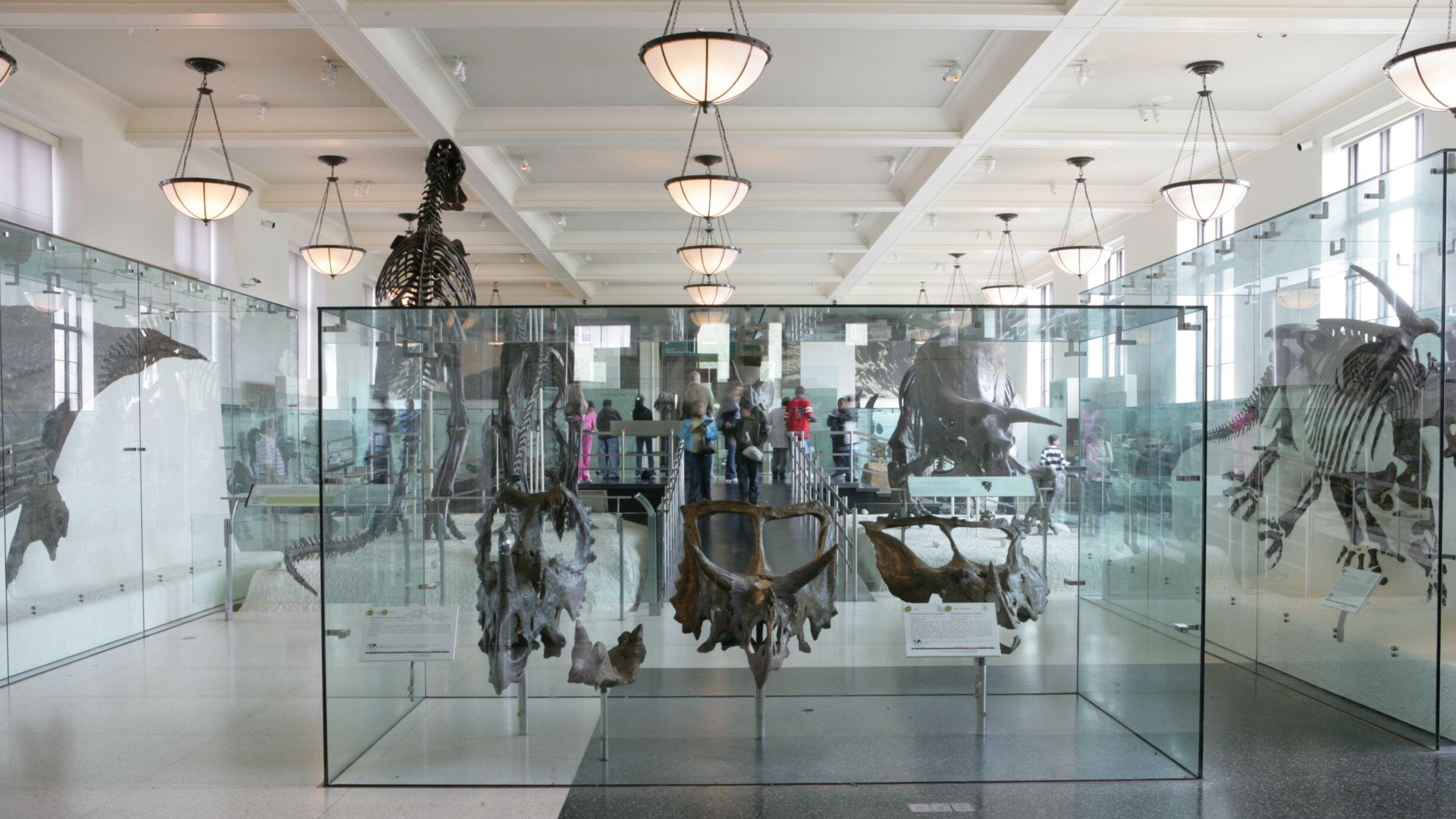 Ceratopsians such as Centosaurus, Pentaceratops, and Triceratops were a horned group of ornithischian dinosaurs.
Ceratopsians such as Centosaurus, Pentaceratops, and Triceratops were a horned group of ornithischian dinosaurs.D. Finnin/© AMNH
Towering giants such as Tyrannosaurus rex and Apatosaurus are both saurischians, but many plant-eating dinosaurs, including Triceratops and Stegosaurus, are classified as ornithiscians—which means bird-hipped—because their pubis bone was originally thought to resemble that of birds.
Today, that name is a quirk of the past. In fact, scientists consider modern birds to be saurischian dinosaurs, because they share many more-advanced skeletal features with the latter group.
Confusing name aside, ornithischians remain a fascinating, and diverse, dinosaur group. Read on for snapshots of three fascinating species.
D. Finnin/© AMNH
In the 1880s, no one had ever seen a fossil from a horned dinosaur, so when paleontologist O.C. Marsh first examined Triceratops horn fragments, he was understandably puzzled. Marsh thought the fossil was from an ancestor of the American bison, so he named it Bison alticornis. Additional fossil discoveries provided more evidence, and in 1889 Marsh named the species Triceratops horridus.
Triceratops’ skull measures about 8 feet long—almost a third of its body length—yet it was much lighter than it looks. Inside its massive head, its brain was smaller than that of a German shepherd. And in its beak-shaped mouth, Triceratops had between 144 and 160 teeth, which it replaced completely between two and four times over its lifetime.
D. Finnin/© AMNH
Lumbering Stegosaurus stenops adults measured about 25 feet long—about the length of four twin mattresses. This armored dinosaur likely used the distinctive plates along its back for display, to attract mates or signal its own species. Fossils of stegosaur plates are crisscrossed with grooves for blood vessels, indicating that they were covered with skin when the animal was alive.
The four flexible spikes on its tail, though, were used for defense against predators like the saurischian predator Allosaurus. These spikes even have an informal name—thagomizers—coined by Garry Larson in a Far Side cartoon that depicted Neanderthals studying this dinosaur species, and its supposedly deadly tail, in an anatomy class. (We don’t have to tell you that hominids and Stegosaurus didn’t overlap).
Unlike Triceratops, Stegosaurus had a remarkably tiny head. But both dinosaurs had surprisingly small brains relative to their overall body size. The brain of an adult Stegosaurus was only the size of a walnut—astonishing for an animal of its size. So astonishing, in fact, that some biologists once thought it may have had two brains, but the second “brain” turned out to be an enlargement in the spinal cord.
D. Finnin/© AMNH
About 70 million years ago, duck-billed dinosaurs—one of the most widespread dinosaur groups, also known as hadrosaurs—could be found living in varied habitats across the Americas, Europe, and Asia.
Despite its impressive size from a human perspective, as illustrated by the paired mounts at the Museum, Anatotitan was only a medium-sized hadrosaur. And in the years since the Museum's fossil skeletons were mounted, paleontologists have changed their views of these animals' posture and locomotion. Neither the crouched skeleton nor the upright skeleton represents the new view. Researchers now think that duckbills were quadrupedal, moving around on four limbs with an outstretched tail held above and parallel to the ground.
Some duckbills had another interesting feature: large, hollow, sweeping crests on the tops of their skulls. The crests were covered in skin that may have been brightly colored. Some scientists think such crests could have been used as part of mating rituals, much as peacocks use their tails.
Explore more plant-eating dinosaurs in the Hall of Ornithischian Dinosaurs.